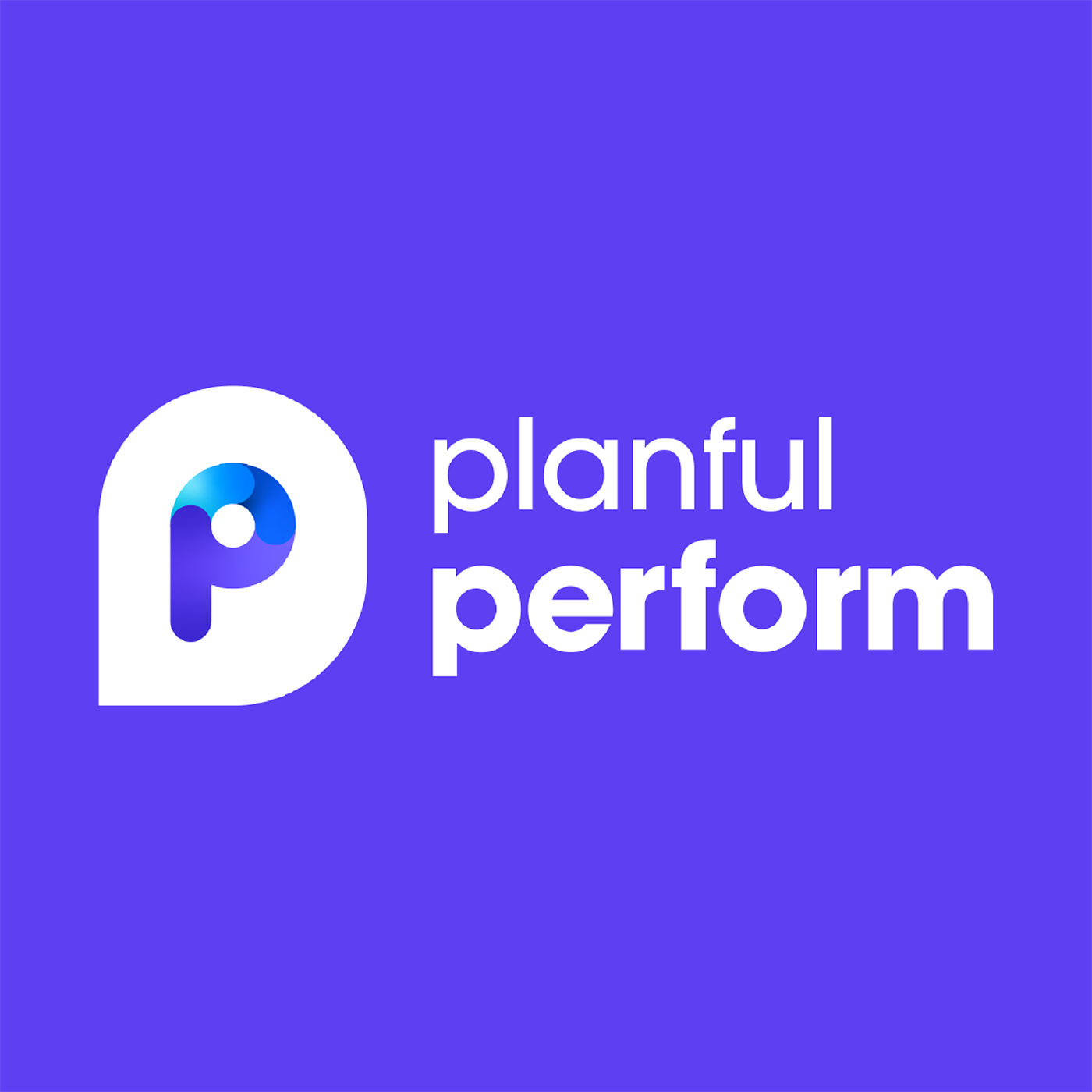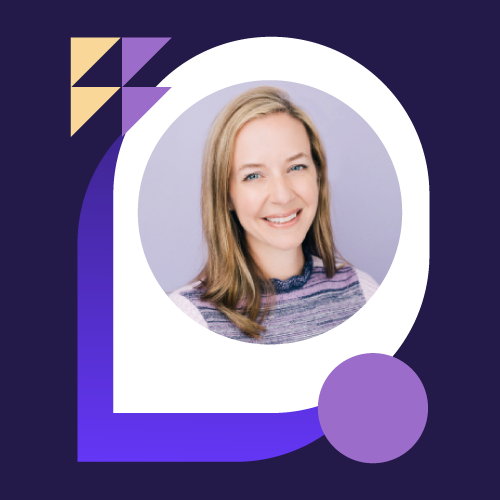How National DCP Fueled User Adoption with Advanced Reporting with Michael Zambetti
- 0.5
- 1
- 1.25
- 1.5
- 1.75
- 2
Michael Zambetti: Hello, everyone. I'm Michael Zambetti, and today, I'm going to take you through how to increase user adoption through advanced reporting. I know for our company, this was one of the most difficult obstacles to overcome, so not only do we have to teach everybody this brand new software with this new functionality and all these brand new tools that people were a little bit unfamiliar with, but then on top of that, we also had to figure out," How do we get everybody in the organization to start using this brand new software?," so with that being said, I hope you get a lot out of this, and let's get into it. A little bit about myself is I started out at University of Georgia, getting my major in finance. I recently got my CFA, and I also have a little baby girl coming here in October, so I have a lot of big things coming down the pipeline for me, fortunately. In addition to that, I had a very interesting start as far as my whole expertise journey with Planful, you can say. When I first started on with my company, I didn't have a manager at the time because we had just experienced a little bit of turnover, so what I started doing is I started studying for my CFA material for level one at the time, back in middle of 2017. My boss at the time came over and said," Michael, you really shouldn't be doing that at this time in work, but we understand. Just find other ways in which you can use your time," and I said," No problem," so what I started doing is I started figuring out," You know what? We just implemented this brand new software called Planful, and no one really knows how to use it yet."" Let me go and figure out how I can try to better myself and how I can be the expert in Planful," so I started doing is I started looking at the live online sessions. I started looking at the self- paced sessions, the bootcamps, the certifications, and I honestly self- taught myself everything to do with Planful, so if you guys haven't done that yet, I highly, highly suggest it, especially the live online instructor- led sessions, because they're really able to help guide you in the right direction. In addition to that, at NDCP, we started out doing operations, so I was figuring out how to increase the productivity at the distribution centers and ultimately cut their costs, and also be able to determine the financial feasibility of brand new projects that came down the pipeline. What happened is I started progressing up through the operation side, and then I wanted to continue to progress and continue to learn new things, so then, I started transitioning a little bit into the analytics side of things, so I started doing different regression analyses, and I started looking into margin and the product cost and all different rebate structures and payment terms and everything else on the P& L essentially besides operations. That's ultimately how I've taken my career now, so now, I now kind of control everything to do with our financial statements and consolidations and doing all margin analysis, G& A, capital, things like that. I've also had many different experiences with Planful software and pioneering into new spaces that we haven't actually used before, and found many different ways in which we could ultimately improve the finance team's efficiency within the organization. First and foremost, we created a very granular and very deep, long range plan, which was new at Planful. In addition to that, we reduced our month- end close process from five to three days, so that was a huge feat for us because now, we're ultimately able to spend more time driving value in the rest of the organization as opposed to reporting on things that already happened. In addition to that, this is fortunately my second time being a speaker for Planful. They asked me to come back after the first time, so I didn't mess up too badly. Previously, I did speak on Excel- based reporting, and ultimately now, we are taking that next step, so not only is it learning how to do that software, now it is you know how to do all the different reports. How do you use that in your organization? National DCP, we're ultimately responsible for all aspects of the supply chain, so that's anywhere from sourcing the product to begin with, bringing that in- house into our distribution centers, to providing that product and distributing it to the different franchisees, and currently, we do all of that for Dunkin' Donuts. The main goal here of what we're trying to get everyone to do is we're trying to increase the user adoption and get more people in your organization to start using Planful so that ultimately, they're able to increase their financial IQ and to be able to make decisions at a much quicker pace, so whereas before, it may have been reliant on a lag in being able to receive that reporting from certain analysts. Now, they're able to go in and they're able to do some of that information digging on their own end, so it's able to take out a lot of the middle, unnecessary work by creating these central repositories and knowing how to use your reports in the most efficient way possible. This was a really cool quote that our CEO actually told me recently. We never really used dashboards before. I just started using it, and what I started doing is I created some different ways to show very high- level aspects of our business, more of like an executive summary, and he loved it. The thing that he said in response was very impactful, and it said," Things that get inspected get respected." What he meant by this is the more you are able to provide very meaningful reporting in which you have these executives who want to look at these different reports and are trying to understand what's happening to it, because these reports are ultimately unveiling phenomenal information about your business, well, if they're looking at those reports, other people are going to want to make sure that that information is correct and that they ultimately have a story for that report that they're looking at, so if you are able to ultimately drive very valuable reporting and to the right target audience, then you're ultimately going to be able to be able to get a lot more recognition. That takes me to the next point as far as what we're going to be talking about today, so we're going to start out with structured planning templates in which our ops leadership and our accounting groups have both found very, very valuable use of. After we get into the structured planning templates and really putting in information into the software, then we start getting into," How do we extract that data into meaningful manners?," and that gets into the dynamic reports and management, being able to identify and QC different information that's in their budgets that are in their forecasts, looking at report collections, so ultimately," How do we distribute that on a mass scale and speed up that process that's previously probably taking lots and lots and lots of excess time that wasn't necessary?" Then, we get into the Spotlight Excel reports, so a little bit more granular, that Excel add- in function, which is very valuable if no one has gotten exposed to that previously. We'll get into that in a little bit, as well as the dashboards, which is more for like an executive level summary. The first one is structured planning templates. Now, this isn't anything revolutionary. This isn't anything that requires a lot of technical skills or entails some significant learning curve. This is simply altering your reporting with the end goal in mind of increasing that user adoption, increasing that collaboration across your organization. An example of how we did this for our company was we took certain gap- driven items, such as rent or property taxes, or vacation, and we broke that out into a separate accounting template, and then provided all of our accountants specific user access to just look at that template whenever they log in, to only input into that specific template, and so now, what that does is not only does it increase that collaboration and increase your user adoption, but in addition to that, it increases the buy- in because now all of a sudden, they have a stake in the outcome. They feel more like they're contributing to the overall goal of creating that budget, of creating that forecast. Now, all of a sudden, they're responsible and they're accountable for their line items specifically, where previously, some things could have possibly been missed. They could have been sending emails back and forth and things could have been lost in the shuffle, so what this does is it ultimately gets them to buy into your end budget, into your end forecast, so this has been a huge game- changer for us. In addition, we've also gained alignment with ops leadership much more efficiently, because previously, what happened is we may have been inputting some of their different productivity metrics. We may have been inputting certain factors into their budget without them knowing right away, for instance, or maybe they did know, and then they forgot about it, whatever the case is. Now, all of a sudden, they're able to go in and they're able to see their numbers live. They're able to go in and input what their productivity is, and then in the finance organization, you're able to take their inputs as far as what they know on the ground level in their distribution centers, and you're able to ultimately relate that input into a financial output, so we've had a lot of success with this. Again, it's a very simple change, but very impactful. This brings us to the next point, which is dynamic reports, so the structured planning, that got our information into the system. Now, we have our data populated for our budget and forecast. Now, this is the first step into taking that out of the system, querying that data, and showing it in some type of report. We automated the financial statements, which was major, because now, anyone can go and look at any time period without having to go and continue to request from your finance group," What was net income this period?,"" What was our warehouse operating expense?,"" What was our transportation operating expense?," so this was very valuable for us. In addition to that, you're able to change your scenario comparison. This is just a little side note, a little side note, little tool tip for instance. Substitution variables, what we actually do with these are for each column, we have a scenario being that substitution variable, so we even have a substitution variable for actuals. While that doesn't really make sense right now, you will notice later on is, we're not really comparing actual versus budget versus forecast every time. Sometimes there might be requests that come down the line, which might be compare our previous forecast to our current forecast to our previous budget, whatever the case is, and you can alter all of that with the click of the button if you set up all of your columns to substitution variables. If you don't and you just have your current budget or if you just have your budget in there and you have your actuals listed as they currently are, it's a lot more static, so I highly suggest making high use of that substitution variable function. In addition to that, what these dynamic reports have really enabled our management to do is they're able to go in and they're able to look into how things ended up, how very, very quickly you're able to pull up," Okay, based off all the budgets and forecasts we put, how are we comparing against these different scenarios?," so this is a very simple, very seamless way of retrieving that information, and that brings us into report collection. Report collections are really just a whole conglomerate of those different dynamic reports. Typically, you won't really need to use this, but we use these for our month- end closes for forecasts, for budgets, because what you're able to do is you're able to take your different dynamic reports and you're able to burst it out on all different dimensions. What you see here on this side of the screen is that's actually a table of content showing all these different dynamic reports and how they were bursted on your different departments, for instance, or your different profit centers, and you can almost immediately overload your customer with data if they would like it. I know, our company specifically, for these month- end closes and budgets and forecast, is we actually burst our dynamic reports on about 120 different dimensions. What that enables you to do is you're able to go in, and if you want to look into every single granularity piece of this specific distribution center, you can go in there and you can have your time and look at every single possible data point there is if you want, but you also have the high levels in there, and so this is a great tool for being able to use that. We use this to provide to our VP of finance and our controller, and we even provide it to our CFO actually, so this is a great tool to kind of see how things roll up and be able to go back and validate it in an external Excel report, which you're very familiar with. The next one is the Spotlight Excel report. I know I talked to you guys a little bit about this before. I know some people use this, but this is a very, very valuable tool in which you're able to go and extract this data very quickly. Our accounting group actually uses this to make some of their accruals, so what happens is we have these reports that are saved out there in the cloud. They can just go in there and access it very quickly, refresh it for the current period, and all of a sudden, it ripples through all those metrics into their pre- created formulas, and then spits out, say their fuel numbers, so it takes our miles per gallon metric, it multiplies that bar in miles, and all of a sudden, that gets to our total fuel cost. This is very, very handy tool that our accountants use all the time, and this is also another point where I want to talk about the importance of that substitution variable one more time. If you set it up appropriately, you can have your report so that someone who's less technically advanced, all they have to do, if it's linked to say the current month, for instance, they can just repress that refresh button, and then all of a sudden, all their numbers come through, so you don't have to train these users how to be very technical and how to put in these different query functions in Spotlight. If you set it up appropriately, it just takes one button, and they're cruising, so that's another reason why this is very, very, very important. In addition to using this, some users, they desire a certain format because they're comfortable with that format. They don't want to stray with that. That's what they're used to, so this is a perfect example of finding another way to tailor to your specific audience. If they're familiar with a certain report, they want pink in the top- left corner, they want blue in the top- right, and they want Curly font in the middle, you can do that in Spotlight Excel reports and Excel- based reports, so we make a lot of use for that, and we gain a lot more alignment by being able to provide that report in that way that your end users desire to consume that material, and the last one is dashboards. Like I had mentioned before, we never really use dashboards. I know this is a little bit of a new functionality, and Planful is constantly developing this, but this is the first time in which we actually created this dashboard. What I did was I just took some of the high- level metrics that we use as a company, some overall things like our margin, our profitability, some things that executive would love to see, and it ended up receiving phenomenal feedback, and so I highly suggest you guys do the same thing and try to go out and find different ways that you can leverage these dashboards in which these people can, these internal customers can ultimately access this and see some of the high- level things that are happening in your business. Just some other examples of some things that we're actually talking about doing ourselves at our company, which you could probably use as well would be, for instance, we're looking at doing weekly reporting out of the dashboards. A good thing about these dashboard as well, is you can actually use them to tie into your dynamic reports, or not just your dynamic reports, but your dynamic planning, I should say, so if you do have that increased dimensionality, it's not limited. It's not impossible to do that within a dashboard interface within Planful, so options are really endless here and it's a very visually aesthetic merit to increase that rollout to the rest of the organization. All in all, we talked about several different things here. One big thing is driving that contribution and that collaboration across your organization, because if you have these different users and they're contributing to your end product, they're contributing to your forecast directly, not just telling you information, but they're actually inputting it themselves, they're a lot more likely to buy into your end product, so that's a very, very valuable thing to be able to gain that adoption. Another piece is combining that automation with simplicity. For instance, there's a couple of examples here, so like the financial statement automation in your dynamic reports where users can just go in and they can just toggle between months and be able to retrieve that information themselves. You only want to spend your time on the most essential aspects. You don't need to just do report distribution if someone's able to already access that themselves in a central repository, for instance, and also with simplicity and automation. That's kind of what we talked about as far as report collections and being able to press a button, and all of a sudden, have 100 different reports, all be put together in an Excel file, and you can even distribute it on an email distribution following that export. Increase user adoption, so this is actually a number that we actually increased ours for, so we increased from five to 35 people, so obviously 7X, we really saw an impact with this, and I think that you guys would be able to see similar changes if you do roll this out in easily consumable and desire consumable manners. Ultimately, what our end goal here is not only just increase the user adoption, but the ultimate goal here is that we want to be able to drive quicker business decisions. What we're doing is we're increasing that data availability, so we're able to ultimately accelerate those business decisions, and from the data processing phase to the decision, kind of shorten that time frame, and all of this comes from tailoring your reporting to your target audience. That being said, thank you for your time, and I hope you guys have a great day.
DESCRIPTION
When National DCP wanted to raise the financial IQ of the business, they used advanced reporting to whet their appetite for information and pull more users onto Planful. Hear Michael Zambetti, Manager, Finance & Data Analytics, explain how the company used report collections, Spotlight reports, and dashboards to attract executives, business managers, and more to adopt Planful while speeding decision making across your organization. You’ll also learn how the company created executive-level dynamic dashboards and transformed reporting for all corners of the business.








